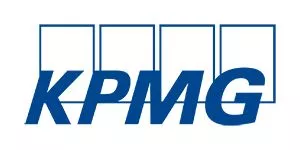Anti-Money Laundering
FATF consolidated assessment ratings
On 7 May 2024, the Financial Action Task Force (FATF) issued an updated report on the effectiveness and technical compliance ratings of countries assessed against the 2012 FATF Recommendations and the 2013 Assessment Methodology. This report, presented in tabular form, outlines the performance of countries in implementing Αnti-Μoney Laundering and CounterFinancing of Terrorism (AML/CFT) measures. It offers stakeholders the latest insights into global efforts against financial crimes, serving as a vital tool for policymakers and regulators. Alongside the table, detailed Mutual Evaluation Reports provide in-depth analysis and context, aiding in understanding and guiding future actions in the AML/CFT domain.
New EU rules to combat moneylaundering adopted by the Council of the European Union
On 30 May 2024 the EU Council adopted the Anti-Money Laundering and Anti-Terrorism Financing Package (the AML Package). The AML Package contains an EU Single Rulebook Regulation, a new Directive and a Regulation establishing a new AML Authority.
The EU Parliament approved the package earlier in April 2024. For more information on the above please refer to our regulatory insights of April 2024.
This is the final step of the adoption procedure. The texts will now be published in the EU's Official Journal and enter into force.
The AML regulation will apply three years after the entry into force. Member states will have two years to transpose some parts of the AML directive and three years for others.
Asset Management
ESMA publishes call for evidence on review of UCITS Eligible Assets Directive
On 7 May 2024, ESMA published a call for evidence (CfE) on the review of the UCITS Eligible Assets Directive (EAD).
Given that the responses received to its CfE will inform its technical advice to the EU Commission on possible reforms to the UCITS EAD, this is likely to be of interest to all promoters and managers of UCITS funds.
Background
Under the UCITS Directive, a UCITS may only invest in specific asset classes, including certain transferable securities, money market instruments, other investment funds, bank deposits, and financial derivative instruments. The UCITS EAD supplements the UCITS Directive by setting down specific criteria that must be satisfied by an instrument to be considered eligible for investment by a UCITS. However, since its adoption in 2007, the number, type, and variety of financial instruments traded on financial markets have increased considerably. This has lead to uncertainty in determining whether certain categories of financial instruments are eligible for investment, in turn giving rise to divergent interpretations and market practices in terms of the application of the UCITS Directive and possible investor protection concerns.
In June 2023, the EU Commission mandated ESMA to provide technical advice on the review of the UCITS EAD. In particular, it asked ESMA to analyse whether any divergences have arisen in the implementation of the UCITS EAD across EU member states and to provide it with a set of recommendations on how it should be revised to keep it in line with market developments.
Content of the CfE
The CfE is divided into separate sections which seek to collect evidence on the main aspects of the ESMA mandate:
- Section 3.1, which contains 19 questions, deals with convergence issues and the clarity of key concept and definitions
- Section 3.2 looks at direct and indirect UCITS exposures to certain asset classes and related data collection/analysis. This sets out six questions on which ESMA is seeking views.
Convergence issues and clarity of key concepts
The questions in this section include:
- Priority issues to address in the UCITS EAD with a view to improve investor protection, clarity, and supervisory convergence across the EU.
- Recurring or significant issues experienced with the
interpretation or consistent application of the UCITS EAD rules
and/or understanding with respect to:
- financial indices
- money market instruments
- notions of liquidity or liquid financial instruments
- the 10% limit set out in the UCITS Directive for investments in transferable securities and money market instruments other than those referred to in Article 50(1) of the UCITS Directive (sometimes referred to as the 'trash bucket')
- the transferable security criteria
- valuation and risk management criteria
- financial instruments backed by, or linked to the performance of asset other than those listed in Article 50(1) of the UCITS Directive
- embedded derivatives
- delta-one instruments (ESMA is aware of diverging interpretations on the treatment of delta-one instruments under the EAD and requests details of their eligibility assessment per product)
- UCITS investment in other UCITS and AIFs, including in EU ETFs and nonEU ETFs
- Appropriateness of the presumption of liquidity and negotiability in light of changed market conditions since 2007 (2020 ESMA CSA on UCITS liquidity risk management identified issues).
- Understanding of ancillary liquid assets (distinguishing between ancillary liquid assets denominated in (1) the base currency of the fund and (2) foreign currencies. Foreign currency for investment purposes (beyond liquidity).
- Proposed amendments to the UCITS EAD to improve investor protection, clarity and supervisory convergence with respect to Efficient Portfolio Management (EPM) related issues identified in ESMA reports.
- Merits of linking or replacing the notion of EPM techniques with the notion of securities financing transaction (SFT) set out in the SFTR (Regulation (EU) 2015/2365 on transparency of securities financing transactions and of reuse).
- Other definitions, notions or concepts used in the UCITS EAD that may require updates, clarification or better consistency with other EU legislation (e.g., MiFID II, EMIR, Benchmark Regulation and MMFR).
- Whether any rules, guidance, definitions, or concepts in national regulatory frameworks go beyond (gold-plating), diverge or are more detailed than the UCITS EAD and if yes, whether they cause any recurring or significant practical issues or challenges.
Direct and indirect UCITS exposures to certain asset classes
indirect UCITS exposures to certain asset classes on which there are divergent views as regards their eligibility. They should also assess and provide evidence on the merits of such exposures in light of their risks and benefits taking into account the characteristics of the underlying markets. This could include availability of reliable valuation information, liquidity and safekeeping. Respondents should also elaborate and provide evidence on whether indirect exposures increase or decrease the costs and/or risks borne by UCITS and their investors.
To view the full article, click here.
The content of this article is intended to provide a general guide to the subject matter. Specialist advice should be sought about your specific circumstances.
We operate a free-to-view policy, asking only that you register in order to read all of our content. Please login or register to view the rest of this article.



